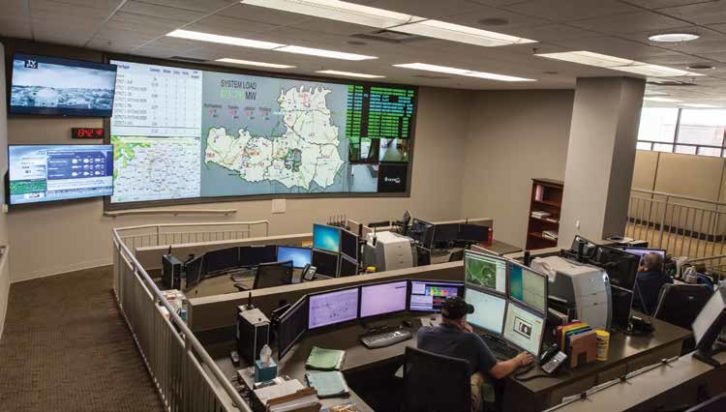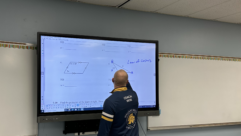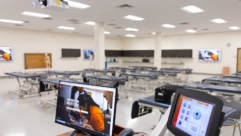

When the technology in its operations center needed a refresh, Middle Tennessee Electric Membership Corporation (MTEMC) worked with companies including RP Visual Solutions (RPV) and Christie to install a video wall that would enable 24/7 monitoring of over 10,000 miles of energized line covering 2,100 square miles of service territory.
MTEMC’s existing control room video wall was seven years old and the light engines were nearing their end of life. With that, MTEMC began to consider how the wall could become more dynamic, with changeable layouts and additional sources to enable critical decision-making.
“We began to think bigger picture,” said Chip Pinion, systems control supervisor, MTEMC. “Ultimately we wanted a wall that would be more dynamic for us, for use day-in, dayout depending on the need of the operator, or when our management or operations team needed to see something specific as it related to an outage.” MTEMC consulted with RPV to design and provide a new video wall. After performing a needs analysis, Randy Pagnan, president, RPV, concluded that, while the architecture of the room was still functional, a technology refresh would bring the control room in line with MTEMC’s vision. RPV’s analysis suggested installing eight Christie Entero HB SXGA+ rear projection engines and eight Christie Phoenix systems to power a 2×4 video wall.
John Brereton, director of operations, RPV, said that upgrading the processor for the control room was determined a priority. “What we looked forward to with the Christie Phoenix was adding additional outputs, as well as a network based solution that allowed us to input and export data from the command wall to field elements, the overview command room and to users in other locations, and allow us to bring that data rapidly and clearly to the display board element when needed.”
The operations center is now able to display data from multiple sources including MTEMC’s SCADA system, the outage management system, as well as weather maps and a cable television feed. MTEMC also uses the wall for after-hours security monitoring of its substations. “During the day, we have crews working and we have one wall layout that fits well, but when you go into the afternoon and evening hours when everyone goes home, we’re coming into more of a monitoring mode,” he said. “Based on who’s working, or what groups are working, we can dynamically change the wall to fit their needs.”










